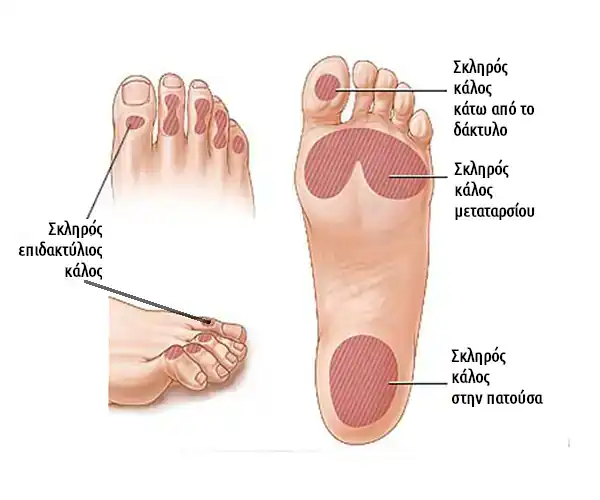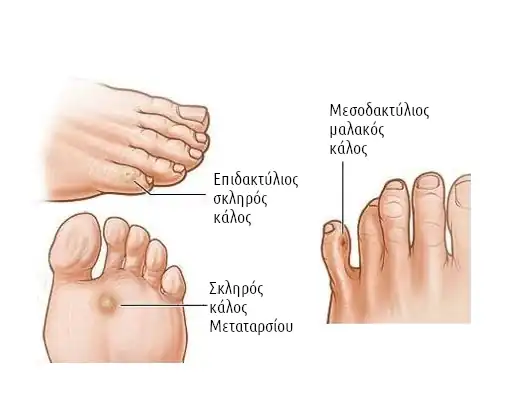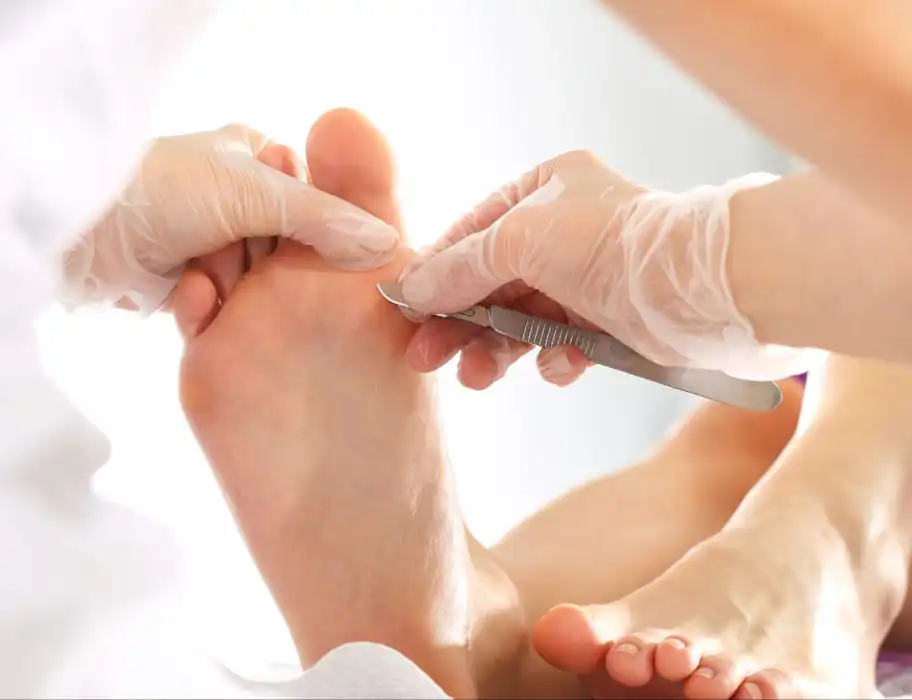Comfortable feet, happy life
Calluses on Feet:
From calluses to relief!
Calluses & Corns
Causes, Treatment and Prevention - The Definitive Solution for Your Feet
What are calluses and how do they form?
Calluses are hard, thickened areas of skin that usually appear on the feet as a result of constant friction and pressure. This friction can be caused by a number of factors, including:
- Poor shoe fit: Tight shoes or high heels put too much pressure on the feet, leading to calluses.
- Pathological conditions: Flat feet, clubfoot, bunions and other foot conditions can cause imbalances in weight distribution and favor the development of calluses.
- Skin conditions: Skin conditions such as psoriasis and eczema can increase the sensitivity of the skin and predispose to the appearance of calluses.
- Sports activities: People who engage in high-intensity sports or who walk long distances are more prone to calluses.
- Age: Age is another risk factor, as over time the skin becomes drier and thinner.

Where do calluses appear?
Calluses can appear anywhere on the foot where there is constant friction and pressure, but the most common areas are:
- Metatarsus: The area under the toes (metatarsal heads).
- Toes: In the places where the toes rub together (inter-ring calluses) or in the contact points (epi-ring calluses) with the shoe.
- Heel: In the areas that come into contact with the ground.
Symptoms of calluses
Callus symptoms can vary depending on the size and location of the callus. The most common symptoms are:
Pain: Burning, stinging, or pain when walking or standing on the leg.
Hard skin area: The appearance of a hard and thick area on the skin.
Redness: The area around the callus may be red and inflamed.

Treatment of calluses
Treatment of calluses depends on the severity of the problem and may include:
- Moisturizing: Use creams and lotions to soften the skin and remove dead cells.
- Exfoliation: Using exfoliating products to remove the hard outer layer of the callus.
- Protection: Use soft pads to prevent chafing and protect the area.
- Medical treatment: In cases of persistent or painful calluses, the podiatrist may suggest the use of medication, the use of cryotherapy, or the removal of the callus with special techniques.
- Avoid caustic liquid for calluses (epicalia), because they are very dangerous. (They are strictly prohibited in the diabetic foot).
- Treat your feet to a beneficial foot bath in warm water for no more than five to ten minutes.
Prevention of calluses
- Choosing the right shoes: Choose comfortable shoes with good support and avoid narrow or high heels.
- Foot care: Keep your feet clean and dry and moisturize them regularly.
- Regular examination: Visit a podiatrist regularly to check the health of your feet.
Conclusion
Calluses are a common problem that can be effectively treated with proper care. With prevention and proper treatment, you can get rid of pesky calluses and enjoy healthier, more comfortable feet.

Problems with calluses on your feet?
we specialize in solving problems that concern your feet
